1 of 8
Downloaded 10 times
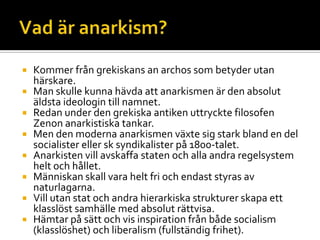

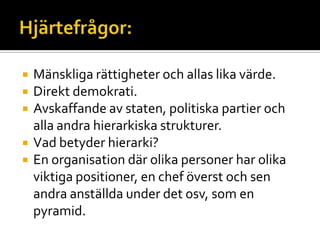


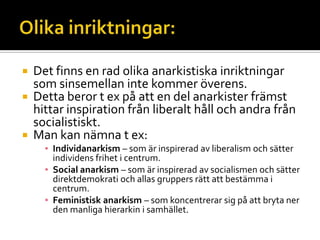
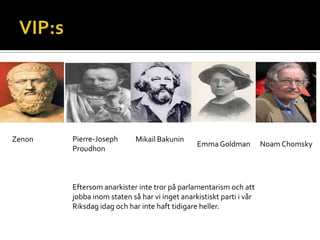
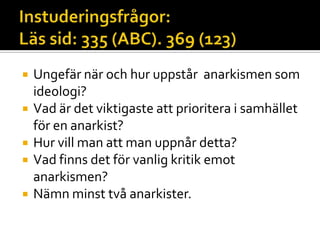
Ad
Recommended
The Enlightenment And Revolution
The Enlightenment And RevolutionGreg Lehr
╠²
The Enlightenment was an intellectual movement in Europe from approximately 1600 to 1800 that emphasized reason and natural rights, influencing various thinkers like Thomas Hobbes, John Locke, and Voltaire. Key concepts included social contracts, separation of powers, and the need for individual freedoms, which laid the groundwork for modern democracy and legal systems. The era also saw advancements in science and philosophy, promoting ideas that led to significant political revolutions, including the American and French revolutions.Life as a Slave
Life as a Slave LewisGray14
╠²
This document provides an overview of the lesson about life as a slave in the 1700-1800s. It discusses the living conditions slaves faced, such as poor quality housing and meager diets. It also describes the various types of difficult jobs slaves were forced to perform on plantations and in homes. The document notes slaves had no control over their lives and were subject to cruel treatment by owners who saw them as property rather than people. The lesson involves note taking and answering a National 5 level question about the usefulness of a source describing the lack of rights and protections for slaves.Korean and Vietnam War Presentation
Korean and Vietnam War PresentationSeth Clendenning
╠²
The document outlines the origins and events of the Korean War (1950-1953) and the Vietnam War (1954-1975), focusing on U.S. involvement due to concerns over communism. It details Korea's division after WWII, the conflict triggered by North Korea's invasion, U.S. military responses, and the eventual stalemate, as well as America's increasing engagement in Vietnam following the fall of French colonial rule. Ultimately, both conflicts highlight the broader context of U.S. anti-communist policies and their implications on military and foreign relations.History of britain
History of britaininmacoleantoniogala
╠²
This document provides a summary of the history of England from 500 BC to the present day. It describes the successive waves of Celtic, Roman, Anglo-Saxon, Viking, and Norman peoples who inhabited the island over time. Key events include the Roman invasion in 43 AD, the Anglo-Saxon invasion in the 5th century, the Norman conquest in 1066, the Tudor and Stuart dynasties, the Victorian era, and both World Wars in the early 20th century. The document also highlights some important locations, monuments, and aspects of English culture throughout its history.The Thirteen Colonies
The Thirteen ColoniesTricia Tabler
╠²
This document provides a summary of the 13 original colonies of British America in 3 sentences or less per section:
- It divides the colonies into 3 geographic regions: New England (4 colonies), Middle (4 colonies), and Southern (5 colonies) and summarizes the economy, climate, resources, and population of each region.
- It then provides 1-2 paragraphs on each individual colony, summarizing their founding date and people, economy, resources, and religion.
- Additional sections summarize the economies, climates, resources, populations, and religions of the colonies overall.Korean and Vietnam War
Korean and Vietnam WarJessica Clark
╠²
The Korean War began in 1950 when North Korea invaded South Korea, testing Truman's policy of containment against the spread of communism. The United Nations authorized troops to defend South Korea led by General MacArthur. MacArthur's surprise attack at Inchon was a turning point that forced North Korean retreat. However, China later entered the war on North Korea's side, pushing UN forces back until a ceasefire in 1953 left the border along the 38th parallel. The Vietnam War began as resistance to French colonial rule, with the US backing France until their defeat in 1954. This divided Vietnam along the 17th parallel, with communist North Vietnam led by Ho Chi Minh and US-backed South Vietnam led by Diem. However, theIndustrial revolution (1)
Industrial revolution (1)Natasha Dzhurkova
╠²
The Industrial Revolution began in Britain and caused widespread economic, technological, and social changes. Britain was able to industrialize first due to its coal resources, iron production, intellectual climate allowing innovation, and global colonial trade networks. Key developments included the steam engine, which improved transportation by land and sea, and new textile machines that vastly increased fabric production. The factories created many new jobs and ultimately led to a more prosperous, educated, and socially mobile society.AP Euro_CH 16.1
AP Euro_CH 16.1John Ricard
╠²
This document discusses the rise of absolutism in 17th century France and Spain. It describes the economic and political crises of the period and how monarchs like Henry IV, Richelieu, Louis XIV, and Colbert centralized power in France. They curbed the nobility, grew the size of government bureaucracies and armies, revoked rights of religious dissent, and pursued mercantilist policies to rebuild their nations' strength. By the early 1700s, France had become the dominant power in Europe under Louis XIV, while Spain's empire had entered decline.Ch 9 Industrial Revolution
Ch 9 Industrial Revolution grieffel
╠²
The Industrial Revolution began in Great Britain in the late 1700s and brought about immense changes through new technologies. Innovations like the steam engine, cotton gin, and other machinery allowed for factories and mass production. This increased productivity and the supply of goods. New ideas in economics also fueled change, including capitalism and laissez-faire policies promoting private ownership and limited government interference. Britain was well-positioned to lead the revolution due to its natural resources, entrepreneurial spirit, and agricultural increases that swelled the labor force. These converging factors powered Britain's rise as the world's first industrialized nation.Russia 1450 1750
Russia 1450 1750Ashley Birmingham
╠²
Between 1450-1700, Russia grew from a loose federation of states centered around Kiev into a vast empire dominated by the Tsars. The Mongol invasion in the 13th century brought Russia under Mongol rule until the 1400s. The first Tsars expanded the Russian state into Siberia and Central Asia while centralizing power. Conflict between nobles and Tsars led to civil wars. The Romanov Dynasty established rule from 1613-1914 after a period of turmoil. Peter the Great forcibly Westernized Russia in the early 1700s through reforms like a modernized army and navy as well as the founding of St. Petersburg, but serfdom and oppression of lower classes continued.Chinese Communist Revolution
Chinese Communist RevolutionNathan Roher
╠²
The document summarizes the revolution in China and the establishment of Communist China. It describes how the Qing Dynasty fell in 1911 leading to a period of warlordism and civil war between the Nationalists and Communists. Mao Zedong led the Communist army using guerrilla tactics against the Nationalists and Japanese. The Communists declared the People's Republic of China in 1949 after defeating the Nationalists in civil war. Under Mao, China underwent land redistribution, industrialization, and the consolidation of power by the Communist party through imprisoning and killing dissidents. The Great Leap Forward failed and caused a famine killing over 20 million people.French Revolution
French RevolutionDelhi Public School Srinagar
╠²
The French Revolution began on July 14, 1789 when protesters stormed the Bastille prison in Paris. This marked the start of widespread civil unrest against the absolute monarchy of King Louis XVI. Inequality, high taxes on the poor, and a financial crisis contributed to growing discontent with the existing social and political system. The Revolution led to the establishment of a constitutional monarchy and a declaration of rights that embraced principles of liberty, equality and popular sovereignty. However, internal divisions and war with other European nations led to increased radicalization and the rise of Maximilien Robespierre's Jacobin dictatorship during the Reign of Terror from 1793-1794. The Revolution transformed France from an absolute monarchy to aAge Of Absolutism 16th ŌĆō 19th Century
Age Of Absolutism 16th ŌĆō 19th Centuryguest6e7b67
╠²
The document provides an overview of the Age of Absolutism in Europe between the 16th-19th centuries. It summarizes the rise of absolute monarchies in Spain, France, England, and Russia during this period and their eventual downfalls. Key events included the defeat of the Spanish Armada weakening Spain's power, the English Civil War replacing the absolute British monarchy with a constitutional one, and the Russian Revolution overthrowing the Russian czar and establishing communism.Week 11 day 3-unit 2- russian revolution guided notes with highlights
Week 11 day 3-unit 2- russian revolution guided notes with highlightsmarypardee
╠²
The document summarizes the events leading up to the Russian Revolutions of 1917. It describes the oppressive rule of the Russian czars, including Nicholas II, and the rapid industrialization that led to unrest among workers and the rise of socialist ideologies like Marxism. World War I exacerbated existing issues, causing strikes and protests that eventually led Nicholas II to abdicate in March 1917. Vladimir Lenin then orchestrated the Bolshevik Revolution in November 1917, allowing the Bolsheviks to seize control without violence and establish communist rule in Russia.German unification
German unificationSedat Y├╝z├╝c├╝
╠²
Nationalism played a key role in German unification in the late 19th century. Otto von Bismarck, as Prime Minister of Prussia, skillfully used nationalism and a series of wars against Denmark, Austria, and France to unify the German states under Prussian leadership by 1871. The new German Empire dominated Europe both economically and militarily, replacing the balance of power that had existed since the Congress of Vienna.French Revolution
French RevolutionGreg Sill
╠²
The document provides background information on the causes and events of the French Revolution from 1789 to 1799. It discusses the long-term causes including the abuse of power by King Louis XVI, inequality between social classes, an unfair tax system, and Enlightenment ideas. The immediate causes included the Third Estate opposing unfair voting methods in the Estates General and demanding a constitution. Key events included the storming of the Bastille prison on July 14, 1789 marking the start of the revolution, the National Assembly declaring the rights of man, and the establishment of a republic after the monarchy was overthrown. The Reign of Terror from 1793-1794 saw the execution of enemies of the revolution by guillotineAbsolute monarchs
Absolute monarchsGreg Sill
╠²
Here are possible answers to the questions about the cartoon:
1. Louis XIV used the image of the sun as a symbol of his power.
2. He likely used the sun as a symbol because the sun is the center of our solar system - implying that Louis XIV saw himself as the center of power in France, with everything revolving around him.
3. The overall meaning of the cartoon is to portray Louis XIV as an absolute monarch who believed he ruled by divine right as God's representative on Earth. The sun symbol reinforced the idea that he, as the Sun King, was the supreme power in France.First Great Awakening
First Great AwakeningBlake Harris
╠²
The document discusses the First Great Awakening, a religious revival in American Protestantism that occurred in the 18th century. It notes key leaders like Jonathan Edwards and George Whitefield who preached to large crowds and traveled throughout the colonies. Their preaching helped spread the Great Awakening and convert people. The document also discusses the Methodist movement founded by John and Charles Wesley and how the Great Awakening divided people into groups like the "Old Lights" who opposed the revivals and the "New Lights" who supported them. The Great Awakening increased religious diversity and tolerance in the colonies.New Netherlands
New NetherlandsBlake Harris
╠²
The document summarizes the Dutch colony of New Netherland, which included the main settlement of New Amsterdam on Manhattan Island. It was established by the Dutch West India Company in 1624 to facilitate trade. The colony implemented a patroon system of land grants to encourage population growth. It was surrendered to England in 1664 during the rule of Peter Stuyvesant, and was renamed New York by the English. The diverse population included Dutch, German, Swedish, Native American, and Jewish settlers.Causes of the english civil war
Causes of the english civil war Mr Blackwell
╠²
The English Civil War was caused by both religious and political factors developing over the long and short term. Long term causes included disagreements over money, power, and religion between the King and Parliament. Short term triggers included the King's attempts to impose his will on the Church and Parliament's refusal to provide further funding without concessions. While religion played an important role, the Civil War was ultimately caused by an intertwining of religious and political tensions, with power being the most significant underlying cause of conflict.Qing dynasty
Qing dynastyHugh_07
╠²
The Qing Dynasty ruled China from 1644 to 1912. It was the last imperial dynasty of China, established by the Manchus. The Qing conquered China and expanded its territory, but faced internal rebellions like the Taiping Rebellion and external threats from European imperialism. The Opium Wars weakened China and led to unequal treaties. By the late 1800s, China was divided into foreign spheres of influence and faced domestic calls for reform as the Qing struggled to modernize and strengthen China in the face of Western encroachment.Impact of the Slave Trade on Africa
Impact of the Slave Trade on AfricaLewisGray14
╠²
The document discusses the impact of the slave trade on Africa, including:
1) Population decreases as large numbers of Africans were kidnapped, lowering Africa's population by 25 million by 1850.
2) Loss of workforce as the bulk of those kidnapped were strong men, leaving a shortage of workers to farm and conduct other jobs.
3) Increased tribal conflicts as some tribes gained power through weapons acquired by selling slaves, leading to more disputes and war between tribes over slaves and territory.The Great Depression
The Great Depression Aneke24
╠²
The Great Depression began in October 1929 with the collapse of the US stock market. Over the next few years, stock prices continued to fall, ruining individual investors and straining banks. By 1933, over 11,000 of the 25,000 US banks had failed. As companies laid off workers, unemployment rose rapidly and many families lost their homes or could not afford food. The Depression worsened through the early 1930s until World War II increased production and put money back into circulation, helping to end the Depression.Scramble for africa
Scramble for africaGreg Sill
╠²
The Berlin Conference
2. Africa
3. To avoid conflict amongst themselves over colonizing AfricaAP Euro CH 14
AP Euro CH 14John Ricard
╠²
Chapter 14 discusses the Reformations and Religious Wars from 1500 to 1600, highlighting key figures such as Martin Luther and John Calvin, and comparing the German and English reformations. It assesses the societal impacts of the Protestant Reformation, political conflicts, and the roles of women and the elite within this context, as well as the response of the Catholic Church. The chapter also covers the rise of religious violence, including the French Wars of Religion and the Great European Witch Hunt.The French Revolution
The French RevolutionMr.J
╠²
The French Revolution began in 1788 when King Louis XVI called the Estates-General to address France's financial troubles. This led to tensions between the three estates, and the formation of the National Assembly by the Third Estate. On July 14, 1789, the storming of the Bastille prison by Parisians marked the start of the Revolution. The National Assembly abolished feudalism and declared basic rights and liberties in the Declaration of the Rights of Man. However, the Revolution grew increasingly radical as outside powers invaded France and the Reign of Terror began, with Robespierre sending thousands to the guillotine until his own execution in 1794. The Revolution transformed France from a monarchy to a democratic republic andLatin American Indpendence movements
Latin American Indpendence movements Brighton Alternative
╠²
The document discusses independence movements in Latin America influenced by the American and French Revolutions in the late 1700s. It summarizes that Toussaint L'Ouverture led the Haitian revolution which abolished slavery and established independence, while figures like Miguel Hidalgo and Simon Bolivar led revolutions against Spanish rule in Mexico and South America respectively. The Monroe Doctrine is also summarized, establishing U.S. opposition to future European colonization in the Americas.More Related Content
What's hot (20)
Ch 9 Industrial Revolution
Ch 9 Industrial Revolution grieffel
╠²
The Industrial Revolution began in Great Britain in the late 1700s and brought about immense changes through new technologies. Innovations like the steam engine, cotton gin, and other machinery allowed for factories and mass production. This increased productivity and the supply of goods. New ideas in economics also fueled change, including capitalism and laissez-faire policies promoting private ownership and limited government interference. Britain was well-positioned to lead the revolution due to its natural resources, entrepreneurial spirit, and agricultural increases that swelled the labor force. These converging factors powered Britain's rise as the world's first industrialized nation.Russia 1450 1750
Russia 1450 1750Ashley Birmingham
╠²
Between 1450-1700, Russia grew from a loose federation of states centered around Kiev into a vast empire dominated by the Tsars. The Mongol invasion in the 13th century brought Russia under Mongol rule until the 1400s. The first Tsars expanded the Russian state into Siberia and Central Asia while centralizing power. Conflict between nobles and Tsars led to civil wars. The Romanov Dynasty established rule from 1613-1914 after a period of turmoil. Peter the Great forcibly Westernized Russia in the early 1700s through reforms like a modernized army and navy as well as the founding of St. Petersburg, but serfdom and oppression of lower classes continued.Chinese Communist Revolution
Chinese Communist RevolutionNathan Roher
╠²
The document summarizes the revolution in China and the establishment of Communist China. It describes how the Qing Dynasty fell in 1911 leading to a period of warlordism and civil war between the Nationalists and Communists. Mao Zedong led the Communist army using guerrilla tactics against the Nationalists and Japanese. The Communists declared the People's Republic of China in 1949 after defeating the Nationalists in civil war. Under Mao, China underwent land redistribution, industrialization, and the consolidation of power by the Communist party through imprisoning and killing dissidents. The Great Leap Forward failed and caused a famine killing over 20 million people.French Revolution
French RevolutionDelhi Public School Srinagar
╠²
The French Revolution began on July 14, 1789 when protesters stormed the Bastille prison in Paris. This marked the start of widespread civil unrest against the absolute monarchy of King Louis XVI. Inequality, high taxes on the poor, and a financial crisis contributed to growing discontent with the existing social and political system. The Revolution led to the establishment of a constitutional monarchy and a declaration of rights that embraced principles of liberty, equality and popular sovereignty. However, internal divisions and war with other European nations led to increased radicalization and the rise of Maximilien Robespierre's Jacobin dictatorship during the Reign of Terror from 1793-1794. The Revolution transformed France from an absolute monarchy to aAge Of Absolutism 16th ŌĆō 19th Century
Age Of Absolutism 16th ŌĆō 19th Centuryguest6e7b67
╠²
The document provides an overview of the Age of Absolutism in Europe between the 16th-19th centuries. It summarizes the rise of absolute monarchies in Spain, France, England, and Russia during this period and their eventual downfalls. Key events included the defeat of the Spanish Armada weakening Spain's power, the English Civil War replacing the absolute British monarchy with a constitutional one, and the Russian Revolution overthrowing the Russian czar and establishing communism.Week 11 day 3-unit 2- russian revolution guided notes with highlights
Week 11 day 3-unit 2- russian revolution guided notes with highlightsmarypardee
╠²
The document summarizes the events leading up to the Russian Revolutions of 1917. It describes the oppressive rule of the Russian czars, including Nicholas II, and the rapid industrialization that led to unrest among workers and the rise of socialist ideologies like Marxism. World War I exacerbated existing issues, causing strikes and protests that eventually led Nicholas II to abdicate in March 1917. Vladimir Lenin then orchestrated the Bolshevik Revolution in November 1917, allowing the Bolsheviks to seize control without violence and establish communist rule in Russia.German unification
German unificationSedat Y├╝z├╝c├╝
╠²
Nationalism played a key role in German unification in the late 19th century. Otto von Bismarck, as Prime Minister of Prussia, skillfully used nationalism and a series of wars against Denmark, Austria, and France to unify the German states under Prussian leadership by 1871. The new German Empire dominated Europe both economically and militarily, replacing the balance of power that had existed since the Congress of Vienna.French Revolution
French RevolutionGreg Sill
╠²
The document provides background information on the causes and events of the French Revolution from 1789 to 1799. It discusses the long-term causes including the abuse of power by King Louis XVI, inequality between social classes, an unfair tax system, and Enlightenment ideas. The immediate causes included the Third Estate opposing unfair voting methods in the Estates General and demanding a constitution. Key events included the storming of the Bastille prison on July 14, 1789 marking the start of the revolution, the National Assembly declaring the rights of man, and the establishment of a republic after the monarchy was overthrown. The Reign of Terror from 1793-1794 saw the execution of enemies of the revolution by guillotineAbsolute monarchs
Absolute monarchsGreg Sill
╠²
Here are possible answers to the questions about the cartoon:
1. Louis XIV used the image of the sun as a symbol of his power.
2. He likely used the sun as a symbol because the sun is the center of our solar system - implying that Louis XIV saw himself as the center of power in France, with everything revolving around him.
3. The overall meaning of the cartoon is to portray Louis XIV as an absolute monarch who believed he ruled by divine right as God's representative on Earth. The sun symbol reinforced the idea that he, as the Sun King, was the supreme power in France.First Great Awakening
First Great AwakeningBlake Harris
╠²
The document discusses the First Great Awakening, a religious revival in American Protestantism that occurred in the 18th century. It notes key leaders like Jonathan Edwards and George Whitefield who preached to large crowds and traveled throughout the colonies. Their preaching helped spread the Great Awakening and convert people. The document also discusses the Methodist movement founded by John and Charles Wesley and how the Great Awakening divided people into groups like the "Old Lights" who opposed the revivals and the "New Lights" who supported them. The Great Awakening increased religious diversity and tolerance in the colonies.New Netherlands
New NetherlandsBlake Harris
╠²
The document summarizes the Dutch colony of New Netherland, which included the main settlement of New Amsterdam on Manhattan Island. It was established by the Dutch West India Company in 1624 to facilitate trade. The colony implemented a patroon system of land grants to encourage population growth. It was surrendered to England in 1664 during the rule of Peter Stuyvesant, and was renamed New York by the English. The diverse population included Dutch, German, Swedish, Native American, and Jewish settlers.Causes of the english civil war
Causes of the english civil war Mr Blackwell
╠²
The English Civil War was caused by both religious and political factors developing over the long and short term. Long term causes included disagreements over money, power, and religion between the King and Parliament. Short term triggers included the King's attempts to impose his will on the Church and Parliament's refusal to provide further funding without concessions. While religion played an important role, the Civil War was ultimately caused by an intertwining of religious and political tensions, with power being the most significant underlying cause of conflict.Qing dynasty
Qing dynastyHugh_07
╠²
The Qing Dynasty ruled China from 1644 to 1912. It was the last imperial dynasty of China, established by the Manchus. The Qing conquered China and expanded its territory, but faced internal rebellions like the Taiping Rebellion and external threats from European imperialism. The Opium Wars weakened China and led to unequal treaties. By the late 1800s, China was divided into foreign spheres of influence and faced domestic calls for reform as the Qing struggled to modernize and strengthen China in the face of Western encroachment.Impact of the Slave Trade on Africa
Impact of the Slave Trade on AfricaLewisGray14
╠²
The document discusses the impact of the slave trade on Africa, including:
1) Population decreases as large numbers of Africans were kidnapped, lowering Africa's population by 25 million by 1850.
2) Loss of workforce as the bulk of those kidnapped were strong men, leaving a shortage of workers to farm and conduct other jobs.
3) Increased tribal conflicts as some tribes gained power through weapons acquired by selling slaves, leading to more disputes and war between tribes over slaves and territory.The Great Depression
The Great Depression Aneke24
╠²
The Great Depression began in October 1929 with the collapse of the US stock market. Over the next few years, stock prices continued to fall, ruining individual investors and straining banks. By 1933, over 11,000 of the 25,000 US banks had failed. As companies laid off workers, unemployment rose rapidly and many families lost their homes or could not afford food. The Depression worsened through the early 1930s until World War II increased production and put money back into circulation, helping to end the Depression.Scramble for africa
Scramble for africaGreg Sill
╠²
The Berlin Conference
2. Africa
3. To avoid conflict amongst themselves over colonizing AfricaAP Euro CH 14
AP Euro CH 14John Ricard
╠²
Chapter 14 discusses the Reformations and Religious Wars from 1500 to 1600, highlighting key figures such as Martin Luther and John Calvin, and comparing the German and English reformations. It assesses the societal impacts of the Protestant Reformation, political conflicts, and the roles of women and the elite within this context, as well as the response of the Catholic Church. The chapter also covers the rise of religious violence, including the French Wars of Religion and the Great European Witch Hunt.The French Revolution
The French RevolutionMr.J
╠²
The French Revolution began in 1788 when King Louis XVI called the Estates-General to address France's financial troubles. This led to tensions between the three estates, and the formation of the National Assembly by the Third Estate. On July 14, 1789, the storming of the Bastille prison by Parisians marked the start of the Revolution. The National Assembly abolished feudalism and declared basic rights and liberties in the Declaration of the Rights of Man. However, the Revolution grew increasingly radical as outside powers invaded France and the Reign of Terror began, with Robespierre sending thousands to the guillotine until his own execution in 1794. The Revolution transformed France from a monarchy to a democratic republic andLatin American Indpendence movements
Latin American Indpendence movements Brighton Alternative
╠²
The document discusses independence movements in Latin America influenced by the American and French Revolutions in the late 1700s. It summarizes that Toussaint L'Ouverture led the Haitian revolution which abolished slavery and established independence, while figures like Miguel Hidalgo and Simon Bolivar led revolutions against Spanish rule in Mexico and South America respectively. The Monroe Doctrine is also summarized, establishing U.S. opposition to future European colonization in the Americas.More from ulfalster78 (20)
Ad
Anarkism
- 1. ’éĪ Kommer fr├źn grekiskans an archos som betyder utan h├żrskare. ’éĪ Man skulle kunna h├żvda att anarkismen ├żr den absolut ├żldsta ideologin till namnet. ’éĪ Redan under den grekiska antiken uttryckte filosofen Zenon anarkistiska tankar. ’éĪ Men den moderna anarkismen v├żxte sig stark bland en del socialister eller sk syndikalister p├ź 1800-talet. ’éĪ Anarkisten vill avskaffa staten och alla andra regelsystem helt och h├źllet. ’éĪ M├żnniskan skall vara helt fri och endast styras av naturlagarna. ’éĪ Vill utan stat och andra hierarkiska strukturer skapa ett klassl├Čst samh├żlle med absolut r├żttvisa. ’éĪ H├żmtar p├ź s├żtt och vis inspiration fr├źn b├źde socialism (klassl├Čshet) och liberalism (fullst├żndig frihet).
- 2. ’éĪ Absolut frihet f├Čr alla individer. ’éĪ Vill absolut inte skapa kaos utan tror i st├żllet mkt p├ź t ex direkt demokrati dvs att alla medborgare ├żr med och tar alla viktiga beslut gemensamt hela tiden. ’éĪ Tror d├żrf├Čr ocks├ź att v├źra stora statsamh├żllen idag ├żr f├Čr stora f├Čr att kunna fungera p├ź ett bra s├żtt. ’éĪ Samh├żllet m├źste delas upp i mindre enheter med f├żrre m├żnniskor s├ź alla kan vara med och fatta beslut och hantera problem tillsammans.
- 3. ’éĪ M├żnskliga r├żttigheter och allas lika v├żrde. ’éĪ Direkt demokrati. ’éĪ Avskaffande av staten, politiska partier och alla andra hierarkiska strukturer. ’éĪ Vad betyder hierarki? ’éĪ En organisation d├żr olika personer har olika viktiga positioner, en chef ├Čverst och sen andra anst├żllda under det osv, som en pyramid.
- 4. ’éĪ Ett st├Črre anarkistiskt samh├żlle har aldrig skapats i praktiken hittills i modern tid. ’éĪ Men tanken p├ź allas ultimata frihet och total klassl├Čshet ├żr fin. ’éĪ Vad kan det uppkomma f├Čr problem i ett samh├żlle om vi avskaffar staten och alla andra hierarkier? Ō¢¬ F├Črs├Čk att ├Čversiktligt komma p├ź n├źgra problem. Ō¢¬ F├Črs├Čk ocks├ź lite mer utf├Črligt f├Črklara varf├Čr total statlig makt leder till detta?
- 5. ’éĪ Anarkin kr├żver p├ź s├żtt och vis att alla ├żr med p├ź just anarkin. ’éĪ Om ngn vill skapa ett politiskt parti eller en hierarkisk organisation s├ź kan ju ingen stoppa denna person eftersom staten och lagarna inte finnsŌĆ” Hur l├Čser man detta?? ’éĪ Kommer alla n├źgonsin vara med p├ź att skapa samma samh├żlle? ’éĪ M├źnga menar ocks├ź att man har en alldeles f├Čr stor ├Čvertro p├ź oss m├żnniskor. ’éĪ Utan stat, lagar och hierarkier kommer samh├żllet l├źngsamt rasa s├Čnder och bli till kaos.
- 6. ’éĪ Det finns en rad olika anarkistiska inriktningar som sinsemellan inte kommer ├Čverens. ’éĪ Detta beror t ex p├ź att en del anarkister fr├żmst hittar inspiration fr├źn liberalt h├źll och andra fr├źn socialistiskt. ’éĪ Man kan n├żmna t ex: Ō¢¬ Individanarkism ŌĆō som ├żr inspirerad av liberalism och s├żtter individens frihet i centrum. Ō¢¬ Social anarkism ŌĆō som ├żr inspirerad av socialismen och s├żtter direktdemokrati och allas gruppers r├żtt att best├żmma i centrum. Ō¢¬ Feministisk anarkism ŌĆō som koncentrerar sig p├ź att bryta ner den manliga hierarkin i samh├żllet.
- 7. Pierre-Joseph Proudhon Mikail Bakunin EmmaGoldman Noam Chomsky Eftersom anarkister inte tror p├ź parlamentarism och att jobba inom staten s├ź har vi inget anarkistiskt parti i v├źr Riksdag idag och har inte haft tidigare heller. Zenon
- 8. ’éĪ Ungef├żr n├żr och hur uppst├źr anarkismen som ideologi? ’éĪ Vad ├żr det viktigaste att prioritera i samh├żllet f├Čr en anarkist? ’éĪ Hur vill man att man uppn├źr detta? ’éĪ Vad finns det f├Čr vanlig kritik emot anarkismen? ’éĪ N├żmn minst tv├ź anarkister.